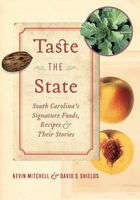🔥 Celebrate new books on our BBQ & Grilling shelf with 25% off ckbk membership 🔥
Orange
By Kevin Mitchell and David S. Shields
Published 2021
“The houses have piazzas, and are often beautifully shaded with trees. Orange and fig trees abound.”
The Northern Traveller, 1832
On February 7, 1835, an arctic vortex swept over the Lowcountry, dipping as far south as St. Augustine. Temperatures plunged to 2 degrees Fahrenheit and remained in the single digits for days. From South Carolina to Florida, orange trees, some dating to the Spanish occupancy of the region, died. Charleston’s yards, until that winter, abounded in orange trees. Indeed, the orange, not the water oak, mulberry, or pride of India tree was the city’s dominant shade tree. So thickly did they grow—both the sweet and sour varieties—that the Charleston City Council in 1832 entertained a motion for “hewing down the shade trees of the city” in order to make “the pavements last long.” While the editor of the Charleston City Gazette endorsed the removal of the pride of India trees from the cityscape because “the excessive hugeness of its limbs, calling for frequent trimming, yields but little shade,” he despaired of the loss of the orange trees “which yield the most admirable shade and shelter, from the heats of our Southern sun.” The orange trees yielded benefits more than shade.
Become a Premium Member to access this page
Unlimited, ad-free access to hundreds of the world’s best cookbooks
Over 150,000 recipes with thousands more added every month
Recommended by leading chefs and food writers
Powerful search filters to match your tastes
Create collections and add reviews or private notes to any recipe
Swipe to browse each cookbook from cover-to-cover
Manage your subscription via the My Membership page
In this section
Advertisement
Advertisement


